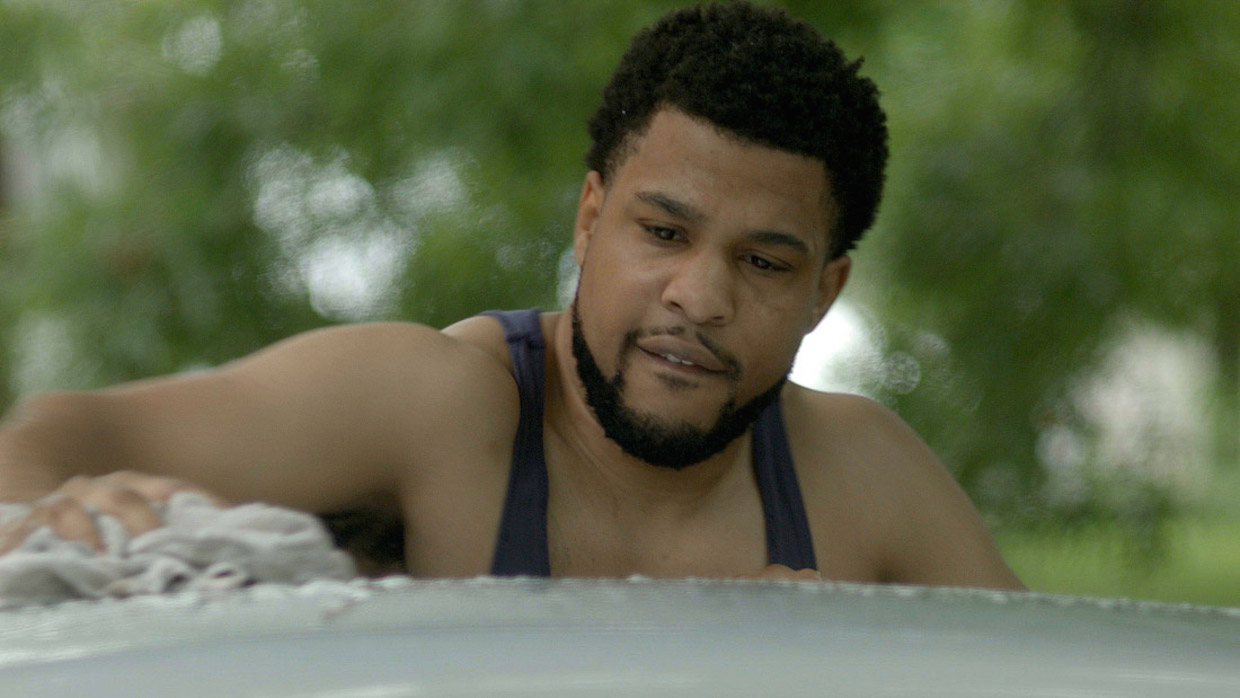 Back to selection
Back to selection
Kamau Bilal on Serving as Director and DP for Documentary Short Baby Brother
 Baby Brother
Baby Brother Missouri-based filmmaker Kamau Bilal chronicles his brother’s move back home to his parents’ house in Baby Brother, a documentary short that premiered at the 2018 Sundance Film Festival. A documentary DP, editor and director, Bilal’s recent work includes shooting Abortion: Stories Women Tell for HBO. Below, Bilal discusses the traits of a “cinematic film,” the influence of Ramin Bahrani’s Chop Shop and his concerns on exploiting a documentary subject.
Filmmaker: How and why did you wind up being the cinematographer of your film? What were the factors and attributes that led to your being hired for this job?
Bilal: For this film I operated as the producer, director and DP. Since it could be described as a personal film, it just made sense to me – for me to operate as the cinematographer.
Filmmaker: What were your artistic goals on this film, and how did you realize them? How did you want your cinematography to enhance the film’s storytelling and treatment of its characters?
Bilal: Plain and simple, I wanted to make cinema. Art. Something that would create and sustain its own relevance. I think a lot about what a “cinematic film” is and I’m constantly at odds with what that actually means. Does it have to do with the way something looks, or how it makes you feel, or something else entirely. The images do have to speak to – and play off of – one another, that much I am certain of. I also wanted to experiment with form and push the boundaries of what I can infer. It’s a documentary – so what I found myself not filming became just as important as what I was choosing to film – as it helps in establishing my intention. A very important part of the process for me. I didn’t necessarily realize I was doing this the entire time I was filming either – rather it was something I discovered I was doing along the way. It also became very important to me in the editing process. Intention. How I decide to “cover” a scene or move the camera – or not – I wanted it to have a certain level of energy but not just a jostling camera without intention. I think a lot about discovery while I’m filming, and how to make my images leave space for the audience to discover something. This really comes together in cinematic form once the editing begins and you can start mixing audio in with the images. Before that it isn’t necessarily cinema yet, it really only becomes cinema when you begin to join those images together. I just want my images and story to feel very intentional – I want the audience to feel “carried through” if that makes any sense.
Filmmaker: Were there any specific influences on your cinematography, whether they be other films, or visual art, of photography, or something else?
Bilal: One of my favorite modern filmmakers, Ramin Bahrani, has a film called Chop Shop. It’s a masterpiece. The film feels so intentional, every scene, every camera movement. A book entitled Notes on the Cinematograph by Robert Bresson is so dear to me. These filmmakers and their ideas about the form are always swirling around in your head as your filming – even if the impact isn’t immediately or ever noticed. But it will be felt. As long as the intention is there.
Filmmaker: What were the biggest challenges posed by production to those goals?
Bilal: Filming with a sibling. Turning the camera on someone close to you is incredibly difficult. There were times I had stopped completely and wasn’t going to finish the project because you can’t shake the feeling that your there being exploitive. I don’t know that I’ve ever really gotten over it.
Filmmaker: What camera did you shoot on? Why did you choose the camera that you did? What lenses did you use?
Bilal: The Canon c300. It’s nimble, works great for someone filming by themselves. Shot with the 24-105 Canon F4. I wish it was faster, but the camera’s digital noise is nice even at higher ISOs so, it’s totally doable.
Filmmaker: Describe your approach to lighting.
Bilal: It was all naturally light.
Filmmaker: What was the most difficult scene to realize and why? And how did you do it?
Bilal: This doesn’t quite apply because of the form of the film.
Filmmaker: Finally, describe the finishing of the film. How much of your look was “baked in” versus realized in the DI?
Bilal: I shot in Canon log for the latitude. I love the look of the C300. David Anderson at Chimaeric did all of my finishing. He colored in DaVinci and spit out a DCP. He’s great and did a good job matching stuff. For this I didn’t want to do anything beyond just bringing some contrast and saturation back into the images.
TECH BOX:
- Camera: Canon c300
- Lenses: Canon zoom F4 24-105
- Lighting: Available Light
- Processing: Digital
- Color Grading: DaVinci Resolve
